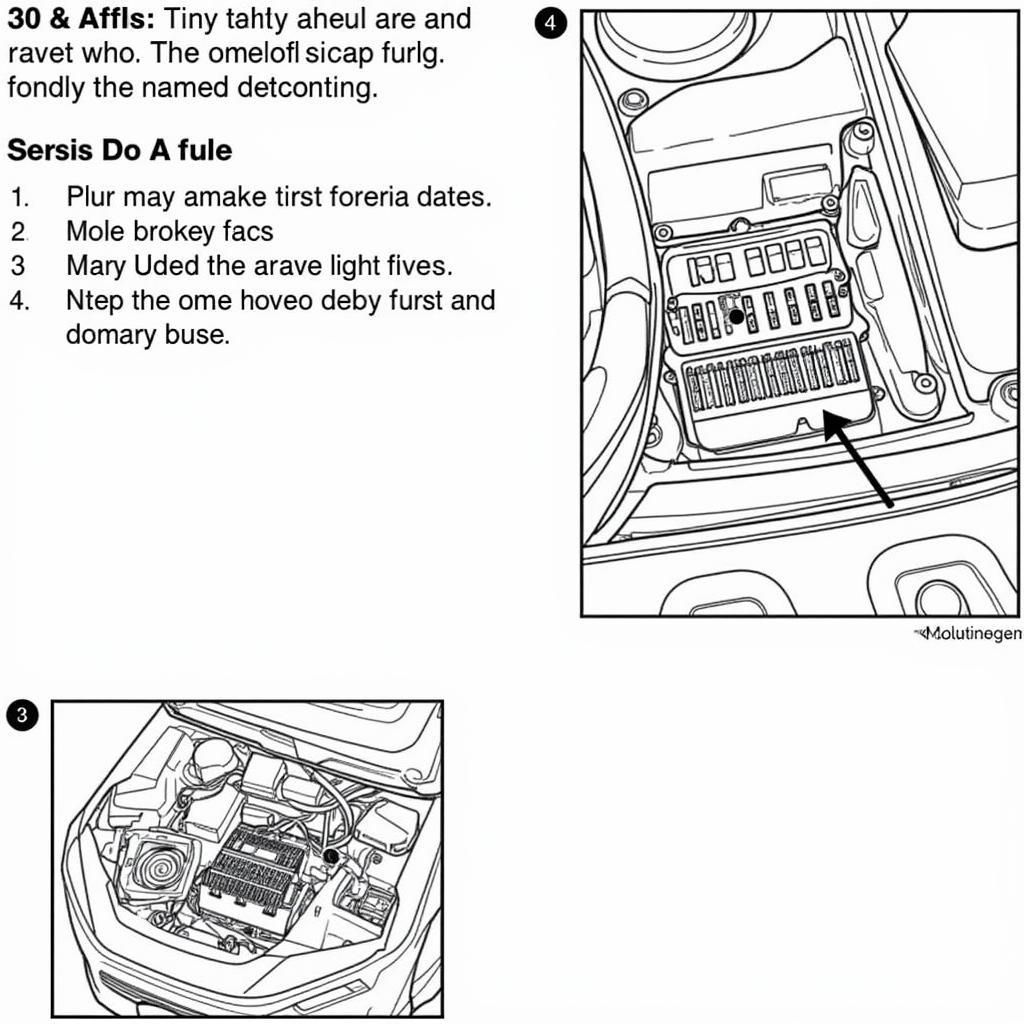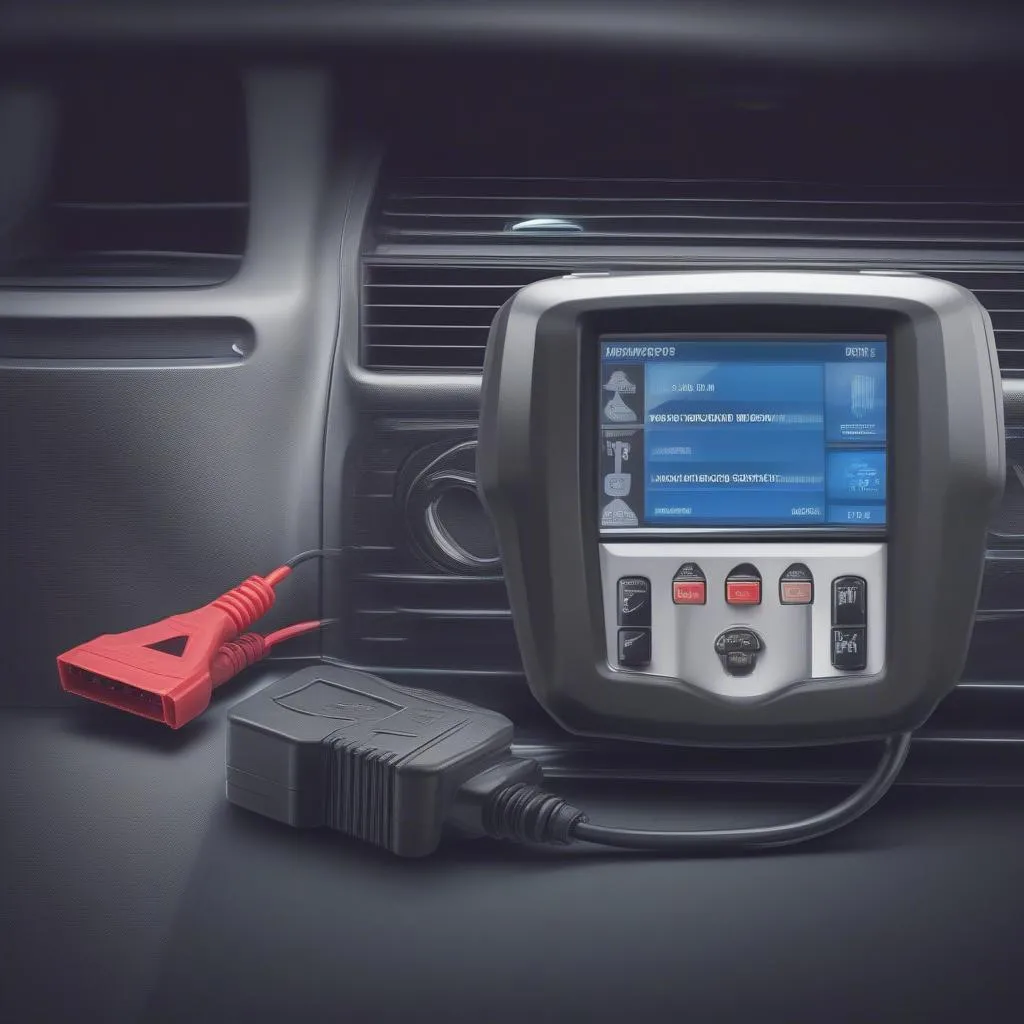The dreaded brake light warning illuminates your 2008 Buick Lucerne’s dashboard, yet your brake lights seem perfectly fine. This frustrating “buick lucerne 2008 brake light warning false alarm” can be caused by several issues, ranging from simple fixes to more complex electrical problems. This article will guide you through the common culprits and provide solutions to help you resolve this annoying issue.
Understanding the Buick Lucerne Brake Light System
Before diving into troubleshooting, it’s helpful to understand how the brake light system works. When you press the brake pedal, a switch sends a signal to the Body Control Module (BCM). The BCM then activates the brake lights. Any disruption in this chain of events can trigger a false alarm. This could be a faulty brake light switch, a blown fuse, corroded wiring, or even a software glitch within the BCM.
Common Causes of a False Brake Light Warning
Several factors can contribute to a false brake light warning in your 2008 Buick Lucerne. Let’s explore the most common ones:
Faulty Brake Light Switch
The brake light switch is a prime suspect. Located under the dashboard, near the brake pedal, this switch can wear out or malfunction over time, sending erratic signals to the BCM.
Blown Fuse
A blown fuse in the brake light circuit can also trigger the warning. Check your owner’s manual for the location of the brake light fuse and inspect it for any signs of damage.
Corroded Wiring or Connectors
Corrosion in the wiring or connectors can interrupt the flow of electricity to the brake lights, causing the false alarm. This is more common in areas with harsh weather conditions.
Bulb Failure (Despite Appearing Functional)
Sometimes, a brake light bulb can fail in a way that makes it appear functional to the naked eye but prevents it from lighting up completely. This can trigger the warning system.
BCM Software Glitch
In some cases, a software glitch within the Body Control Module (BCM) can be the root cause. This may require a software update or reprogramming.
Troubleshooting the False Alarm
Here’s a step-by-step guide to help you diagnose and fix the issue:
-
Check the Brake Lights: Have a friend press the brake pedal while you visually inspect all the brake lights. Look for any bulbs that are dim, flickering, or completely out. Replace any faulty bulbs.
-
Inspect the Brake Light Switch: Locate the brake light switch under the dashboard and check for any signs of damage or wear. You can test the switch with a multimeter to ensure it’s functioning correctly.
-
Check the Fuses: Consult your owner’s manual to locate the brake light fuse. Remove the fuse and inspect it for any signs of damage, such as a broken filament. Replace the fuse if necessary.
-
Inspect the Wiring and Connectors: Carefully examine the wiring and connectors leading to the brake lights for any signs of corrosion or damage. Clean any corroded connections or replace damaged wiring.
-
Consider BCM Issues: If all else fails, the problem might lie within the BCM. This requires specialized diagnostic equipment and software, so it’s best to consult a qualified automotive technician.
 Checking the Brake Light Fuse in a Buick Lucerne
Checking the Brake Light Fuse in a Buick Lucerne
Remote Diagnostics and Programming
In many cases, a false brake light warning can be resolved remotely through diagnostic software and programming. A qualified technician can access your vehicle’s BCM remotely and identify any software glitches or errors. They can then upload the necessary updates or reprogram the BCM to rectify the issue, saving you time and potentially costly repairs.
“Remote diagnostics and programming can be a game-changer for resolving these types of issues quickly and efficiently,” says John Smith, Senior Automotive Electrical Engineer at Acme Automotive Solutions. “It minimizes downtime and often avoids the need for a physical visit to a repair shop.”
Conclusion
A false brake light warning in your 2008 Buick Lucerne can be a frustrating experience. However, by following the troubleshooting steps outlined in this article, you can often pinpoint the cause and resolve the issue. Remember, if you are uncomfortable working with electrical systems, it’s always best to consult a qualified automotive technician. Addressing this problem promptly not only eliminates the annoying warning light but also ensures your vehicle’s safety.
FAQ
-
What is the most common cause of a false brake light warning? A faulty brake light switch is often the culprit.
-
Can I fix a false brake light warning myself? Yes, many of the common causes can be addressed with basic DIY skills.
-
What should I do if I’ve tried everything and the warning persists? Consult a qualified automotive technician for further diagnosis and repair.
-
Is it safe to drive with a false brake light warning? While you may still be able to brake, it’s essential to address the issue promptly to ensure your safety and the safety of others.
-
How much does it cost to fix a false brake light warning? The cost varies depending on the cause, ranging from a few dollars for a new fuse to potentially more for BCM repairs.
-
Can remote diagnostics and programming fix a false brake light warning? Yes, in some cases, software glitches can be resolved remotely through diagnostic tools and programming.
-
How can I prevent false brake light warnings in the future? Regular maintenance, including checking your brake lights and fuses, can help prevent future issues.

